The term “Internet addiction disorder” refers to a problem that develops when an individual becomes dependent on the use of the Internet, or other online devices, as a way to cope with life’s stresses. An increasing number of people are becoming addicted to the internet, especially in countries where it affects large numbers of people, like South Korea, where it is viewed as a national health issue. Asian researchers have carried out a large amount of research on the topic of Internet addiction. North America and Europe are also seeing a rise in this issue.
Read: Catatonia
What is internet addiction?
Are you addicted to video games played on the Internet? Do you shop online compulsively? Do you have trouble stopping yourself from checking Facebook? Are you experiencing negative effects from excessive computer use on your physical, mental and academic well-being? Answering yes to any of those questions could indicate that you are suffering from an Internet addiction disorder, also known as Compulsive Internet Use (CIU), Problematic Internet Use (PIU) or iDisorder.
Originally considered a “real thing”. The original model was satirically compared to pathological gambling by Dr. Ivan Goldberg, MD in 1995. Several researchers, mental health counselors, and doctors recognized this disorder as a serious condition after it gained ground through a hoax. Although not recognized in the Diagnostic and Statistical Manual of Mental Disorders (DSM-IV), it affects over 8.2% of the population in American and European cultures
However, it’s estimated to affect up to 38% of the population. It could be that there is no standardized or true criterion for Internet addiction disorder, which might be contributing to the widely varying prevalence rates. Researchers conduct studies in different ways depending on their field of study. Researchers also conduct research in different ways depending on ethnicity.
The lack of standardization in this field has negatively affected the advancement of the study of Internet addiction disorder. The research community generally accepts, however, that Internet Addiction is a subset of all forms of technology addiction. There are other types of media addiction outside of the Internet, such as television addiction, radio addiction, and others. As the name implies, its focus is on compulsion with the Internet.
Technology addiction has taken over the role of being the top culprit in the digital era due to the explosion of the internet age. Technology is all around you if you suffer from this disorder, which makes it even more troubling. It’s no surprise that the Internet now dominates our lives. Our daily lives can be greatly improved by using the Internet.
Have trouble finding the shirt you’re looking for? Don’t worry, you’ll find it on the Internet! Would you like to order a pizza? Why not order online? Order now! When you suffer from insomnia and cannot sleep, how are you supposed to call a friend to play a video game at 3 am? I bet there are people around the world who are awake and looking forward to playing! That’s why this illness can be difficult to treat – even if the symptoms aren’t as severe. Nowadays, it would be almost impossible to live without the Internet. It surrounds us constantly – and we use it every day.
Compulsive internet use does not involve frequent use of the Internet – watching a lot of YouTube videos, shopping online often, or checking social media. Instead, it involves becoming dependent on the Internet in ways that negatively impact one’s daily life. There are several types of Internet addiction disorder.
There are a number of categories of Internet Addiction, including gaming, social networking, emailing, blogging, shopping online, and inappropriate use of Internet pornographic sites. It’s not how much time you spend on the Internet that’s problematic – it’s how you use it. It can be just as important whether Internet use is risky as how much time is spent on it. Is your teen using a dating site that may be used by child molesters?
Internet addiction disorder has multidimensional features. This is one of them. There are additional multidimensional risk factors associated with problematic internet use, including impairments of physical and mental health, impairments of social functioning and emotional impairments.
Read: Brief Psychotic Disorder
Regular vs. problematic internet use
There is a difference between regular and problematic internet usage. You might spend several hours per day browsing in your free time as well as lengthy hours online for school or work.
Problematic internet use interferes with your social, professional, and personal lives as a result of excessive use of screens.
Internet addiction causes
Because Internet addiction disorder is not known to have an exact cause, it is unlikely to be precisely identified. There are several contributing factors to this disorder. The brain makeup of people suffering from Internet addiction disorder is similar to that of people suffering from chemical dependence, such as drug addiction or alcoholism.
Studies suggest that Internet addiction disorder may alter the structure of the brain physically – particularly by altering the amount of gray and white matter in prefrontal brain regions. Various skills associated with this region of the brain include remembering details, concentrating, and prioritizing. Internet addiction disorder is thought to be caused by structural issues in the prefrontal region of the brain that prevents the brain from prioritizing tasks in your life and preventing you from prioritizing your life, i.e., Internet use takes priority over necessary activities.
The pleasure center of the brain is also affected by Internet addiction disorder, as is the case with other dependency disorders. A reward for the addictive behavior is triggered by the release of dopamine, which promotes the pleasure experienced by the brain. Inevitably, the same pleasure is not induced with more and more of the activity, creating a dependency. It follows then, that if you find playing online games or shopping online pleasurable and suffer from an Internet addiction, you will need to engage in the behavior more and more to achieve the same sensation as you had before your addiction.
This behavior is also caused by the variable reinforcement effect of Internet addiction. Several theories regarding the origin of addiction to Internet activities (e.g., gaming, gambling, shopping, pornography, etc.) suggest that multiple layers of rewards are responsible for our addiction to Internet activity.
Thus, if you surf the web continuously, you can reap a variety of rewards that are unpredictable. Seeing Facebook updates may provide you with a repeating and unexpected source of good news every time you sign on. It could be that your good friend got engaged. A friend of yours has just given birth to a child when you sign on the next time! Perhaps the guy you are actually interested in just broke up with his long-term girlfriend and posted an update about it.
You’re always surprised by the results you get on each log-on, which will keep you entertained. The fact that certain games, such as MMORPGs (massively multiplayer online role-playing games) such as World of Warcraft and Everquest, never end is a contributing factor to Internet addiction.
There may also be some biological predispositions to Internet addiction disorder. The levels of dopamine and serotonin in those who suffer from this disorder are lower than those in the general population. It is possible to experience the same level of pleasure from Internet addiction by engaging in more behaviors than someone not suffering from that condition. People may engage in more behaviors to achieve this pleasure, increasing the risk of addiction.
There is also a link between Internet addiction and anxiety and depression. You may reach out to the Internet if you suffer from anxiety or depression already. Individuals who are shy or awkward may also be at an increased risk of becoming addicted to the Internet. You may turn to the Internet for solace if you suffer from anxiety or depression. It is emotional and rewarding, despite not requiring interpersonal interaction, that may make Internet use a good habit if you are shy or socially awkward.
Read: Disorganization Schizophrenia
What are the symptoms of internet addiction?
There are both physical and emotional manifestations of Internet addiction disorder. Here are a few of the most common emotional symptoms:
- Depression
- Dishonesty
- Feelings of guilt
- Anxiety
- Euphoria while using the computer
- Trouble setting priorities or keeping schedules
- Isolation
- Lack of sense of time
- Defensiveness
- Avoidance of Work
- Agitation
- Mood Swings
- Fear
- Loneliness
- Bored with Routine Tasks
- Procrastination
The following are some physical symptoms of Internet addiction disorder:
- Backache
- Carpal Tunnel Syndrome
- Headaches
- Insomnia
- Lack of nutrition (missing meals or eating too much to avoid leaving the computer)
- Personal Hygiene issues (e.g., not bathing to stay online)
- Neck Pain
- Dry Eyes and other Vision Problems
- Weight Gain or Loss
How does Internet addiction disorder affect a person? People who suffer from this disorder might find that it affects their personal relationships, work lives, finances or school lives. An individual with this condition is likely to isolate themselves from others because they spend much of their time in social isolation, and their relationships may suffer as a result.
It is also possible for Internet addicts to conceal their online activity or pretend they don’t spend much time online to cause distrust and dishonesty issues. Also, individuals may portray alternative personas online so that their online behaviors can be disguised. Financial difficulties can also occur when people avoid work, suffer bankruptcy or gamble online. Social withdrawal and difficulties developing new relationships can also be associated with Internet addiction because addicts are more at ease in an online environment than in a real-life situation.
Read: Disinhibited Social Engagement Disorder
How is it diagnosed?
There is no standardized diagnosis for Internet addiction disorder, even as it gains momentum in the mental health field and is recently listed as a disorder in need of more research in the Diagnostic and Statistical Manual of Mental Disorders. It has also been observed that this makes a significant contribution to the variance of prevalence across the population, ranging from 0.3% to a staggering 38%.
According to KW Beard’s 2005 article in CyberPsychology and Behavior, Internet addiction disorder is one of the more widely accepted diagnostic assessments. Internet addiction disorder is diagnosed by applying five diagnostic criteria:
- Always thinks about the past or future use of the Internet
- Uses the Internet for a prolonged period to gain satisfaction
- Aims to cut back, stop, or control Internet usage, but has not been successful
- Attempts to control Internet use with restlessness, moodiness, irritability or depression
- Spends too much time online
In addition, Beard (2005) mentions that Internet addiction disorder must also exhibit at least one of the following characteristics:
- Is in jeopardy of losing a significant relationship, a job, an education or career opportunity due to the Internet
- Disclosed their involvement with the Internet to other family members, therapists or others
- Makes use of the Internet as an escape from problems or as a means of coping with a dysphoric mood (for example, guilt, anxiety, depression, helplessness)
A mental test or questionnaire is likely to have been given to you if you sought help for Internet addiction disorder. These are some of the most common tools for diagnosing Internet Addiction:
- Young’s Internet Addiction Test
- Problematic Internet Use Questionnaire (PIUQ)
- Compulsive Internet Use Scale (CIUS)
Read: Dyslexia
Internet addiction treatment
Recognition of a problem is the first step towards treatment. The likelihood of you seeking treatment is low if you are not aware that there is a problem. Internet users are often not held accountable and have no boundaries. This is one of the big problems they face. There are some things you say and do online that you would never, ever say or do in person – simply because you are hidden behind a screen.
Whether treatment is needed in the first place is a matter of debate in the literature. Internet addiction disorder is considered by some to be a passing fad and it usually clears up on its own. There are studies that indicate that positive self-corrections are possible. Computer abstinence from the computer is not an effective method for correcting behavior, with the majority of professionals agreeing that software to control Internet use and sites that can be visited is an effective form of correction.
There are professionals who say medications can help treat Internet addiction disorder – since, if you are affected by this condition, you are also experiencing anxiety and depression. The general consensus is that treating anxiety and depression will often enable you to treat internet addiction as well. In some cases, these medications can lead to a reduction of online time from 35+ hours a week to 16 hours and have a profound effect on anxiety and depression. It has also been found that physical activity can decrease dependency on the Internet and increase serotonin levels.
Psychological treatments that are commonly used for Internet addiction disorder include:
- Individual, group or family therapy
- Behavior modification
- Dialectical Behavioral Therapy (DBT)
- Cognitive Behavioral Therapy (CBT)
- Equine Therapy
- Art Therapy
- Recreation Therapy
- Reality Therapy
Treatment centers have begun to spring up across the country and around the globe because of the prevalence of the disorder in society at large. Some electro-shock therapy methods were used to keep people off the Internet – these methods were banned in the past. Seattle, WA started ReSTART in 2009 as a residential treatment facility for pathological computer use. An application for USB-connected keyboards has been created to shock users visiting certain websites with a very low voltage shock. Individuals suffering from Internet addiction disorder have started de-addiction centers in other parts of the country and internationally.
Internet addiction disorder is commonly treated with multimodal treatments. This treatment method might involve both medication and psychotherapy for a person who suffers from this condition.
Read: Delusional Parasitosis
Consequences of internet addiction disorder
Addictions, whether to substances or behaviors, lead to detrimental consequences both for the person suffering from it and for their loved ones. IAD has both mental health and social consequences.
Several studies have found that a high percentage of internet users also have co-occurring mental illnesses like depression or anxiety. There is disagreement as to which occurred first, internet addiction or mental illness.
The excessive and compulsive use of the internet can also lead to social consequences because IAD can cause time disruptions. There is a possibility that IAD can adversely affect academic performance, work performance, and social participation. It is also possible to interrupt daily routines, such as maintaining good hygiene, keeping healthy diets, exercising, and spending time with family and friends.
There may be a superficial appearance that these disruptions are harmless, but they are not. It is possible for IAD to have a devastating effect on the life of an individual if left untreated.
Is existence ongoing or in doubt?
Internet addiction is now a real problem, despite being diagnosed as a hoax when the Internet evolved. Internet addiction disorder is not believed by many researchers to be a distinct condition in and of itself or rather a symptom of other disorders.
The fact that everything is online these days makes the interaction even more problematic. It’s hard to tell what’s happening online from what’s happening offline. Nowadays, everything takes place online. You can order food, converse with friends, play games, and even watch TV. Furthermore, other forms of digital technology are gaining popularity as well – which makes access to computers available to more people. Today, we can perform all kinds of tasks remotely using our phones, tablets, or other electronic devices – we don’t have to be physically seated in front of the computer anymore.
Despite this, other researchers continue to wonder if excessive Internet use is an addiction or an addiction-like disorder. It is accurate to say that the Diagnostic and Statistical Manual of Mental Disorders acknowledges that there is still much to be studied about this disorder.
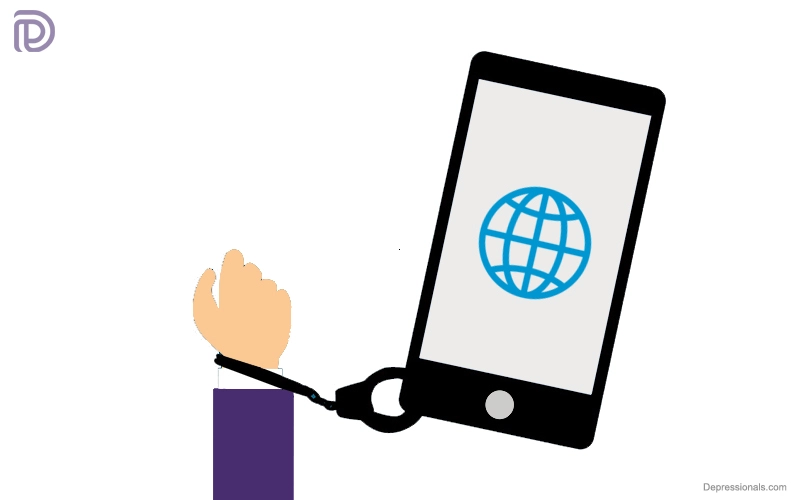
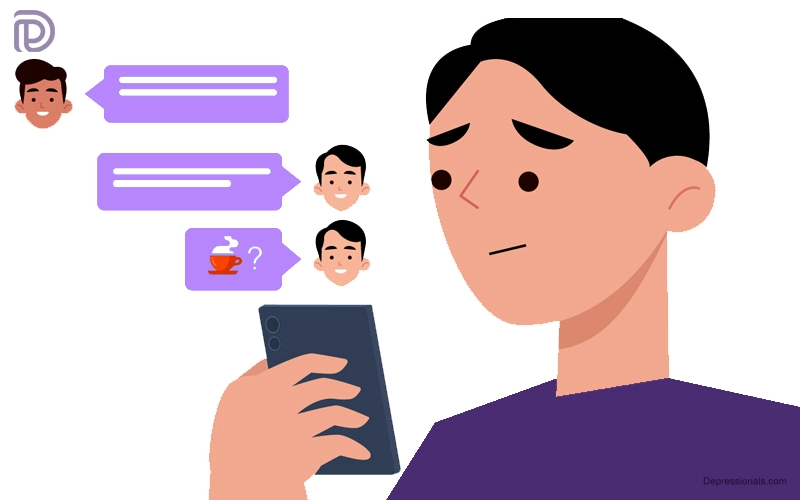
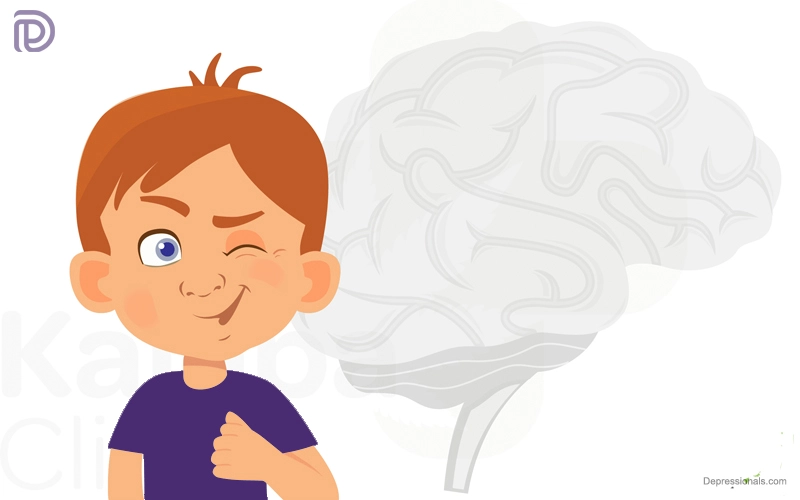
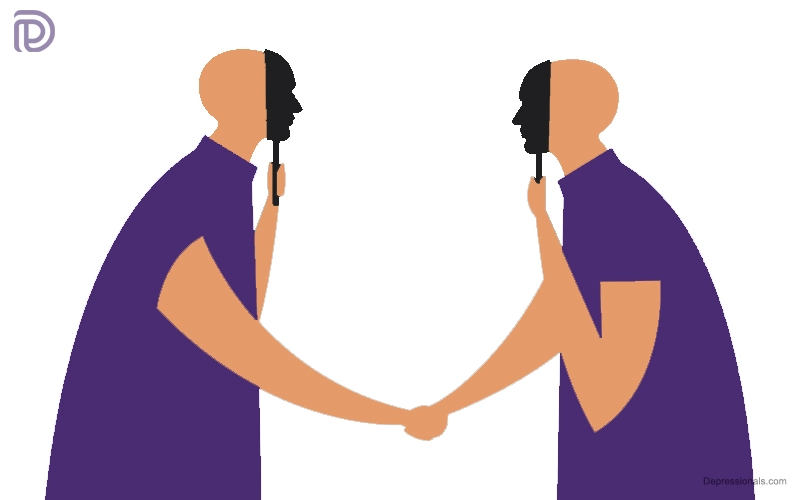
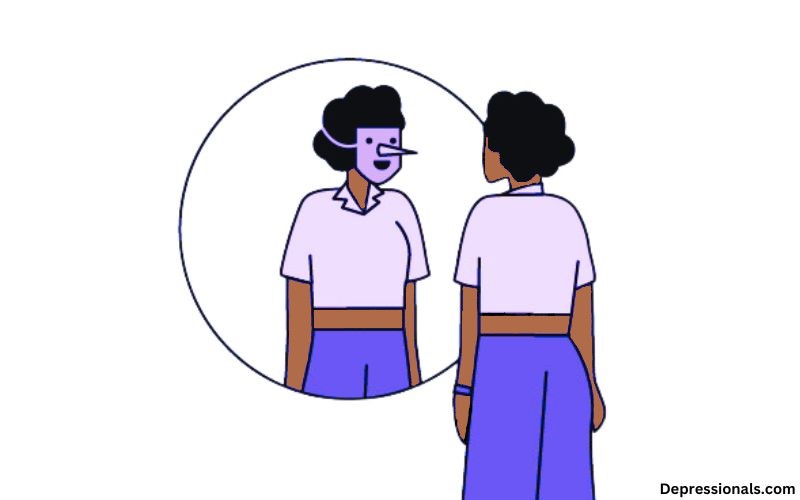

Thanks for writing this article. It helped me a lot and I love the subject.
Thank you for providing me with these article examples. May I ask you a question?
Your articles are very helpful to me. May I request more information?
great post, very informative. I’m wondering why the other experts of this sector don’t realize this. You must continue your writing. I am confident, you’ve a great readers’ base already!
Interesting post here.
ok marked your blog and check again here regularly. I am quite certain I will learn lots of new stuff right here! Good luck for the next!
I’m often to blogging and i really respect your content. The article has actually peaks my interest. I’m going to bookmark your website and keep checking for brand new information.
Thanks for your post right here.
Dude these articles are great. They helped me a lot.
very nice put up, i definitely love this website, keep on it
May I request more information on the subject? All of your articles are extremely useful to me. Thank you!
Magnificent goods from you, man. I’ve understood your stuff
previous too and you’re extremely excellent.
I actually like what you’ve acquired here, I certainly
like what you are stating and the way in which you say it.
You make it entertaining and you still take care of it to keep it smart.
I can’t wait to red far more from you.
This is really a wonderful web site.
Thanks for your publication. One other thing is the fact individual states have their own laws in which affect home owners, which makes it quite hard for the the nation’s lawmakers to come up with a fresh set of rules concerning foreclosure on property owners. The problem is that every state features own legislation which may interact in a negative manner in relation to foreclosure insurance plans.
One pound of learning requires ten pounds of common sense to apply it.
Thanks for posting. I really enjoyed reading it, especially because it addressed my issue. It helped me a lot and I hope it will help others too.
He who is slow to anger has great understanding but he who has a hasty temper exalts folly.
The French work to live but the Swiss live to work.
I really enjoyed reading this article
I really appreciate your help
That’s what i mean when i say that content is the king!
May I request more information on the matter?
Thank you for your help and this post. It’s been great.
Thank you for writing about this topic. Your post really helped me and I hope it can help others too.
Thank you for your post. I really enjoyed reading it, especially because it addressed my issue. It helped me a lot and I hope it will also help others.
I would like to thank you for the efforts you’ve put
in writing this website. I am hoping to view the
same high-grade blog posts from you later on as well.
In fact, your creative writing abilities has
encouraged me to get my own, personal site now 😉
What’s Happening i am new to this, I stumbled upon this I have found It absolutely useful and it has aided me out loads. I’m hoping to give a contribution & help different customers like its helped me. Good job.
I just could not depart your website before suggesting that I really enjoyed the standard information a person provide for your visitors? Is gonna be back often in order to check up on new posts
Hi my friend! I wish to say that this post is
excellent, nicely written and come with almost all significant info.
I would like to look at extra posts like this.
Hi there, just became aware of your blog through Google, and found that it’s truly informative.
I’m gonna watch out for Brussels. I will be grateful if you continue this in future.
Many people will be benefited from your writing.
Cheers!
Thanks for the strategies you have contributed here.
Howdy! I simply would like to give an enormous thumbs up for the nice info you’ve gotten right here on this post. I shall be coming again to your blog for extra soon.
Hey there, I think your blog might be having browser compatibility issues. When I look at your website in Chrome, it looks fine but when opening in Internet Explorer, it has some overlapping. I just wanted to give you a quick heads up! Other then that, wonderful blog!
Thank you for another informative website. Where else could I get that type of information written in such an ideal way? I have a project that I am just now working on, and I’ve been on the look out for such info.
I just wanted to type a quick remark so as to appreciate you for these amazing tips you are writing on this site. My time intensive internet research has at the end of the day been paid with good suggestions to go over with my close friends. I would assert that most of us website visitors actually are truly blessed to exist in a useful site with so many wonderful individuals with helpful secrets. I feel extremely happy to have encountered your web page and look forward to really more enjoyable moments reading here. Thank you once again for everything.
I just couldn’t depart your website prior to suggesting that I really enjoyed the usual info an individual supply on your guests? Is going to be again frequently in order to investigate cross-check new posts
Magnificent goods from you, man. I have understand your stuff previous to and you are just too magnificent. I actually like what you’ve acquired here, certainly like what you are stating and the way in which you say it. You make it enjoyable and you still care for to keep it sensible. I can’t wait to read much more from you. This is actually a tremendous website.
We’re a gaggle of volunteers and opening a new scheme in our community. Your website provided us with valuable info to paintings on. You’ve done an impressive activity and our entire community will be grateful to you.
Undeniably believe that which you stated. Your favorite justification seemed to be on the web the simplest thing to be aware of. I say to you, I certainly get annoyed while people consider worries that they plainly don’t know about. You managed to hit the nail upon the top and also defined out the whole thing without having side-effects , people can take a signal. Will probably be back to get more. Thanks
Interesting blog post.
At this time it seems like BlogEngine is the preferred blogging platform out there right now. (from what I’ve read) Is that what you are using on your blog?
Your place is valueble for me. Thanks!?
Howdy! I know this is somewhat off topic but I was wondering if you knew where I could locate a captcha plugin for my comment form? I’m using the same blog platform as yours and I’m having trouble finding one? Thanks a lot!
Hello there! This is my first visit to your blog! We are a group of volunteers and starting a new project in a community in the same niche. Your blog provided us useful information to work on. You have done a extraordinary job!
There is apparently a lot to identify about this. I think you made certain nice points in features also.
Sweet blog! I found it while browsing on Yahoo News. Do you have any suggestions on how to get listed in Yahoo News? I’ve been trying for a while but I never seem to get there! Many thanks
I simply needed to thank you so much once again. I’m not certain what I would’ve accomplished without the type of tips and hints provided by you relating to such concern. It had become a frustrating situation in my circumstances, however , understanding a specialized mode you dealt with the issue took me to jump for contentment. I’m just happier for the support and then pray you comprehend what a powerful job that you’re undertaking training people today using your websites. Probably you have never encountered all of us.
Thanks a bunch for sharing this with all folks you really recognize what you are speaking about! Bookmarked. Kindly additionally talk over with my web site =). We can have a hyperlink change agreement among us!
I like what you guys are up also. Such intelligent work and reporting! Carry on the excellent works guys I抳e incorporated you guys to my blogroll. I think it will improve the value of my website 🙂
Great beat ! I wish to apprentice while you amend your site, how can i subscribe for a weblog site? The account aided me a appropriate deal. I were a little bit acquainted of this your broadcast provided vibrant clear concept
Thanks for your write-up. I would also like to opinion that the first thing you will need to carry out is check if you really need credit improvement. To do that you simply must get your hands on a replica of your credit file. That should not be difficult, since government makes it necessary that you are allowed to receive one free of charge copy of your own credit report per year. You just have to inquire the right people today. You can either browse the website for the Federal Trade Commission or contact one of the leading credit agencies instantly.
Hi, Neat post. There’s a problem with your web site in internet explorer, would test this?IE still is the market leader and a large portion of people will miss your great writing because of this problem.
Undeniably believe that which you stated. Your favorite justification appeared to be on the net the simplest thing to be aware of. I say to you, I definitely get annoyed while people consider worries that they plainly do not know about. You managed to hit the nail upon the top as well as defined out the whole thing without having side-effects , people could take a signal. Will probably be back to get more. Thanks
Hey there, You’ve performed a fantastic job. I will certainly digg it and in my opinion recommend to my friends. I am sure they’ll be benefited from this web site.
I believe that avoiding prepared foods would be the first step in order to lose weight. They may taste great, but highly processed foods contain very little vitamins and minerals, making you try to eat more only to have enough energy to get over the day. Should you be constantly eating these foods, transitioning to whole grain products and other complex carbohydrates will help you have more power while taking in less. Thanks alot : ) for your blog post.
great post, very informative. I wonder why the other specialists of this sector don’t notice this. You must continue your writing. I’m sure, you’ve a great readers’ base already!
Hello there, You’ve performed an incredible job. I will definitely digg it and for my part recommend to my friends. I’m confident they will be benefited from this site.
I actually wanted to send a comment to thank you for all the awesome suggestions you are posting at this website. My time consuming internet investigation has at the end of the day been honored with reliable tips to write about with my best friends. I ‘d tell you that we website visitors actually are truly endowed to dwell in a fine website with very many brilliant individuals with insightful hints. I feel really lucky to have discovered the weblog and look forward to plenty of more thrilling minutes reading here. Thank you again for all the details.
I have been examinating out some of your stories and i must say pretty nice stuff. I will surely bookmark your site.
Great ? I should certainly pronounce, impressed with your site. I had no trouble navigating through all tabs and related information ended up being truly simple to do to access. I recently found what I hoped for before you know it at all. Quite unusual. Is likely to appreciate it for those who add forums or anything, web site theme. a tone way for your customer to communicate. Excellent task..